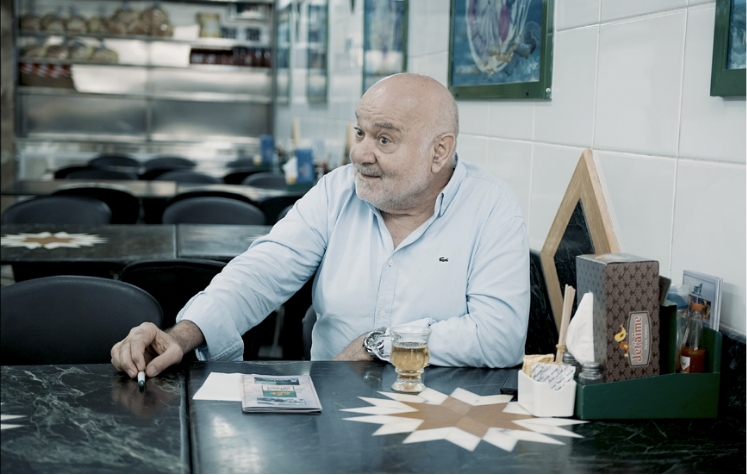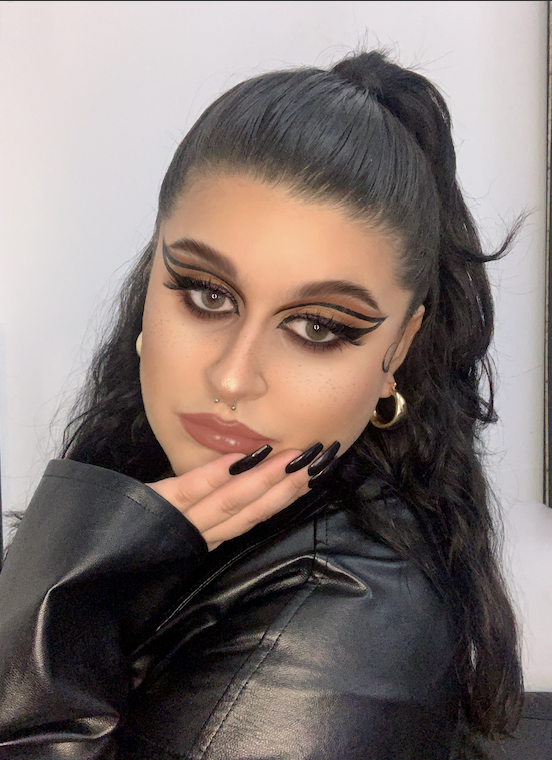You Will Defs Like these too
Life Video of The Day
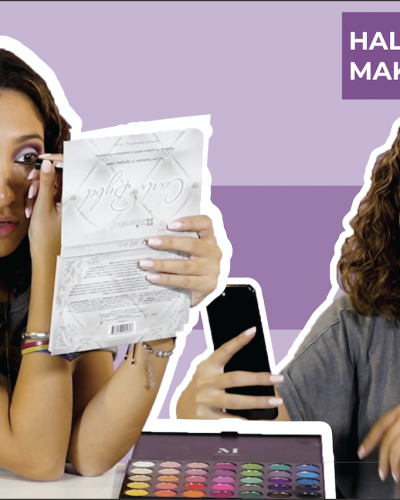
Rund's Halloween Makeup TutorialOct.27.2020
New at The Modern East
Sign Up To Our Newsletter
[ninja_forms_display_form id=20]

Arabic calligraphy – the artistic practice of handwriting and inscription based on the Arabic alphabet, and is commonly referred to in Arabic as ‘khatt’, derived from the word ‘line’. Arabic calligraphy dates all the way back to the time of the prophet and the revelation of the Holy Qura’an and has been used in various forms of developmental practices since. Follow us through the journey of the history of Arabic Calligraphy and its true form.

The origins of the Arabic alphabet can be traced to the writing of the semi-nomadic Nabataean tribes, who inhabited southern Syria and Jordan, Northern Arabia, and the Sinai Peninsula. Many scholars believe that the alphabet was created around the 4th century. The Arabic language, and the art of calligraphy, is held in great esteem by Muslims in relation to Arabic being the language in which the Qu’ran was revealed to the Prophet Muhammad in the 7th century.
The Arabic alphabet is known to be the second most used language in the world and consists of 28 letters written from right to left, in comparison to English, for example, which is written from left to write. Each letter has four ways that it can be written depending on where the letter is placed in a sentence – the beginning, middle, end, and isolated from the word.
Although most Islamic calligraphy is in Arabic and most Arabic calligraphy is Islamic, the two are not identical. Coptic Christian manuscripts in Arabic may make use of calligraphy. Similarly, there is actually Islamic calligraphy in Persian used by those in regions such as Iran.
The two popular scripts used for Arabic scripting are Kufic and Naskh. Kufic was derived from Iraq and used for inscription on stone and metal, while Naskh originated from Mecca and Medina during the time of the prophet and the revelation of the Quran. Although, there are other forms of calligraphy such as the Thuluth, Nasta’liq, and Diwani.
The Thuluth script used during medieval times is known as one of the oldest scripts to exist. The script was used on mosques and for Quranic text due to the appearance of the text.
Although most Islamic calligraphy is in Arabic and most Arabic calligraphy is Islamic, the two are not identical. Coptic Christian manuscripts in Arabic, for example, may make use of calligraphy. Likewise, there is Islamic calligraphy in Persian.

Photo Credits // Mohamed Sewelam
Kufic is the oldest form of the Arabic script. Originating in the city of Kufac, Kufic Khatt was the only script used to reproduce copies of the Quran during the 8th century.

Photo Credits // Islamic-art-and-quotes
Naskh, which directly translates to ‘copying’ was a more developed and legible style of calligraphy that many began to use after the 10th century pioneered by Ibn Muqla, Naskh was a milestone in Islamic Calligraphy and is now used as the standard in Quranic Scripture.
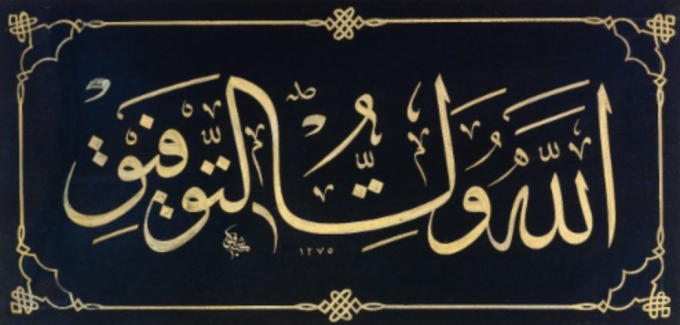
Photo Credits // Mehmed Shefiq
A more eloquent style of calligraphy is Thuluth, mainly used for titles of scriptures and on architectural monuments such as mosques, ceilings of mosques, and engraved on glass panels.
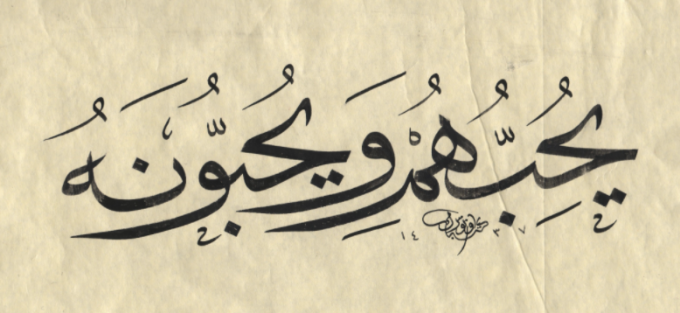
Photo Credits // ismail öztürk
Muhaqqaq was considered challenging to execute although it is much more informal than the previous style. It is mostly used to write short phrases, such as “Bismillah” (In the name of God), and “Yehebhom wa Yeheboonaho” (They love him, and he loves them) – referring to God, as seen in the above picture.
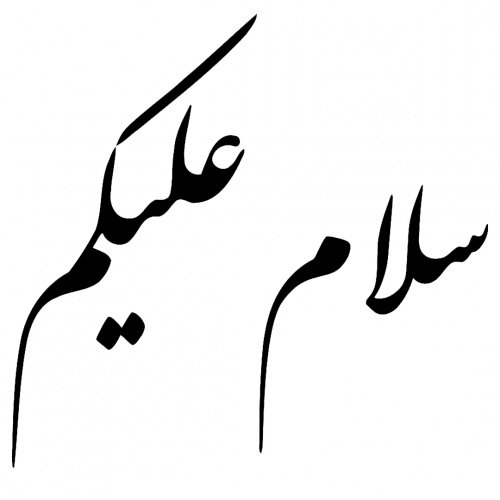
Lastly, we have Nastaliq, a cursive form of calligraphy originating from Iran in the 14th century. It is derived from the style of Naksh, by using steeped lines and concise vertical, broad strokes.
The modern revival of calligraphy began at the end of the 19th century, influenced by the aesthetics and philosophy of William Morris and the Arts and Crafts movement. British Craftsman, Edward Johnston is regarded as being the father of modern calligraphy.
From an artistic point of view, Arabic calligraphy has been known and acknowledged for its diversity and potential for development in terms of writing and different innovative forms of art in the region. In fact, it has been connected to Arabic civilization in fields ranging from religion to art, to architecture, and even to education and craftsmanship.
Today, Calligrafitti is a style that fuses Arab calligraphy with Western graffiti. Young Arab artist have re-imagined it in a new light making it approachable and sparking interest in millennials through many forms such as the art of expression, to using it as a form of revolution in regions such as Iraq, and Palestine and Lebanon in the Levant.
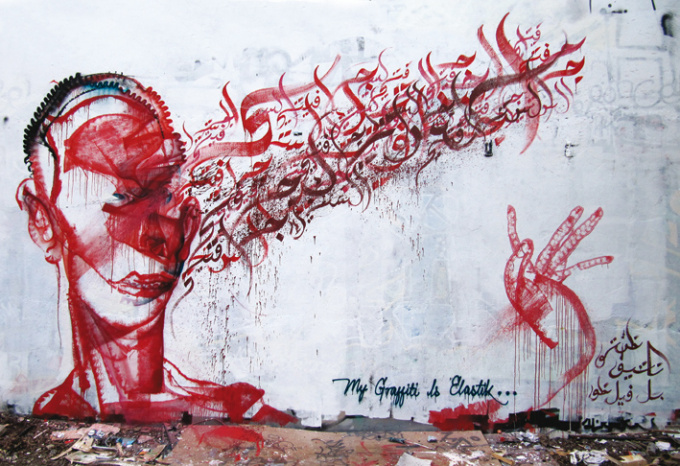
Photo Credits // jacksonallers
